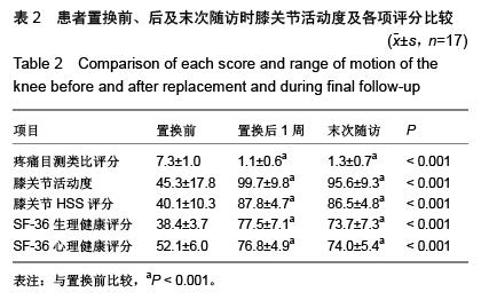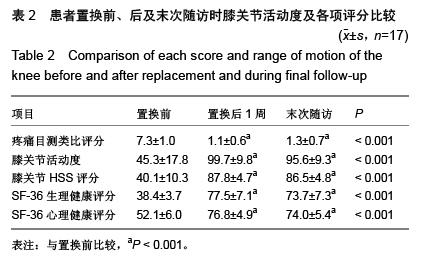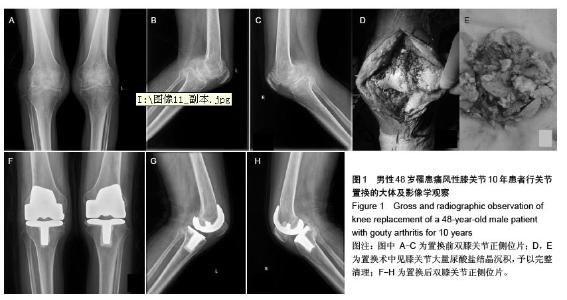| [1] Kuo CF, Grainge MJ, See LC, et al. Epidemiology and management of gout in Taiwan: a nationwide population study. Arthritis Res Ther. 2015; 17: 13.[2] Wallace KL, Riedel AA, Joseph-Ridge N, et al. Increasing prevalence of gout and hyperuricemia over 10 years among older adults in a managed care population. J Rheumatol. 2004; 31(8): 1582-1587.[3] Tu FY, Lin GT, Lee SS,et al.Prevalence of gout with comorbidity aggregations in southern Taiwan.Joint Bone Spine. 2015;82(1):45-51.[4] Smith E, Hoy D, Cross M,et al.The global burden of gout: estimates from the Global Burden of Disease 2010 study.Ann Rheum Dis. 2014 ;73(8):1470-1476.[5] Kuo CF, Yu KH, See LC, et al. Elevated risk of mortality among gout patients: a comparison with the national population in Taiwan. Joint Bone Spine. 2011;78(6): 577-580.[6] Chhana A, Lee G, Dalbeth N.Factors influencing the crystallization of monosodium urate: a systematic literature review.BMC Musculoskelet Disord. 2015;16(1):296.[7] Montoya F, Torres RJ, Fraile JM,et al.An unusual patient with hypothyroidism, tophaceous gout, and marked joint destruction. Nucleosides Nucleotides Nucleic Acids. 2008; 27(6):604-607.[8] Roddy E, Zhang W, Doherty M. Are joints affected by gout also affected by osteoarthritis? Ann Rheum Dis. 2007; 66(10): 1374-1377.[9] Wändell P, Carlsson AC, Ljunggren G. Gout and its comorbidities in the total population of Stockholm.Prev Med. 2015;81:387-391.[10] Falidas E, Rallis E, Bournia VK, et al. Multiarticular chronic tophaceous gout with severe and multiple ulcerations: a case report. J Med Case Rep. 2011; 5: 397.[11] Aguilera X, Gonzalez JC, Celaya F,et al.Total knee arthroplasty in a patient with subcutaneous and intra-articular tophaceous gout-a case report.Bull Hosp Jt Dis (2013). 2014; 72(2):173-175.[12] ten Klooster PM, Vonkeman HE, van de Laar MA.Disability due to gouty arthritis.Curr Opin Rheumatol. 2012;24(2): 139-144.[13] Fang ZH, Waizy H. Current concepts in the treatment of gouty arthritis. Orthop Surg. 2013; 5(1): 6-12.[14] Archibeck MJ, Rosenberg AG, Sheinkop MB, et al. Gout induced arthropathy after total knee arthroplasty: a report of two cases. Clin Orthop Relat Res. 2001;392:377.[15] Williamson SC, Roger DJ, Petrera P, et al. Acute gouty arthropathy after total knee arthroplasty. A case report. J Bone Joint Surg Am. 1994;76:126.[16] Freehill MT, McCarthy EF, Khanuja HS. Total knee arthroplasty failure and gouty arthropathy. J Arthroplasty. 2010;25(4): 658.e7-10.[17] Aitken RC.Measurement of feelings using visual analogue scales.Proc R Soc Med. 1969;62(10):989-993.[18] Insall JN, Dorr LD, Scott RD, et al.Rationale of the Knee Society clinical rating system.Clin Orthop Relat Res. 1989; (248):13-14.[19] Leplege A, Ecosse E, Verdier A, et al. The French SF-36 Health Survey: translation, cultural adaptation and preliminary psychometric evaluation. J Clin Epidemiol. 1998;51: 1013-1023.[20] Fokter SK, Repse-Fokter A. Acute gouty arthritis in a patient after total knee arthroplasty. Wien Klin Wochenschr. 2010; 122(11-12):366-367.[21] Blyth P, Pai VS. Recurrence of gout after total knee arthroplasty. J Arthroplasty 1999;14:380.[22] Healey JH, Dines D, Hershon S. Painful synovitis secondary to gout in the area of a prosthetic hip joint. A case report. J Bone Joint Surg Am. 1984;66:610.[23] Baer PA, Tenenbaum J, Fam AG, et al. Coexistent septic and crystal arthritis. Report of four cases and literature review. J Rheumatol. 1986;13:604.[24] Berger JS, Weinik MM. Acute gouty arthropathy mimicking infection after total knee arthroplasty. PMR. 2009; 1(3): 284-286.[25] Buck M, Delaney M. Diagnosis and management of gout in total knee arthroplasty.Orthop Nurs. 2014;33(1):37-40.[26] Keith MP, Gilliland WR. Updates in the management of gout. Am J Med. 2007;120:221-224.[27] Shahi A, Parvizi J. Prevention of Periprosthetic Joint Infection. Arch Bone Jt Surg. 2015;3(2):72-81.[28] Rezapoor M, Parvizi J.Prevention of Periprosthetic Joint Infection. J Arthroplasty. 2015;30(6):902-907.[29] Ortman BL, Pack LL. Aseptic loosening of a total hip prosthesis secondary to tophaceous gout. A case report.J Bone Joint Surg Am. 1987;69:1096.[30] Dalbeth N, Smith T, Nicolson B,et al. Enhanced osteoclastogenesis in patients with tophaceous gout: urate crystals promote osteoclast development through interactions with stromal cells. Arthritis Rheum. 2008; 58(6): 1854-1865.[31] Malluche HH, Mawad H, Monier-Faugere MC. Effects of treatment of renal osteodystrophy on bone histology. Clin J Am Soc Nephrol. 2008; 3 Suppl 3: S157-163.[32] Cetin P, Tuna B, Secil M, et al.Tophaceous gout causing internal derangement of knee joint.J Clin Rheuatol. 2014; 20(4):235.[33] Hwang HJ, Lee SH, Han SB, et al.Anterior cruciate ligament rupture in gouty arthritis.Knee Surg Sports Traumatol Arthrosc. 2012;20(8):1540-1542.[34] Yu KH, Lien LC, Ho HH. Limited knee joint range of motion due to invisible gouty tophi. Rheumatology (Oxford). 2004; 43(2): 191-194. [35] Tovornik M, D'Arcy Y.How to control pain and improve functionality after total joint replacement surgery.Nursing. 2007;37 Suppl:2-5. [36] Pozzi F, Snyder-Mackler L, Zeni J.Physical exercise after knee arthroplasty: a systematic review of controlled trials.Eur J Phys Rehabil Med. 2013;49(6):877-892.[37] Marwah RK. Comorbidities in gouty arthritis. J Investig Med. 2011; 59(8): 1211-1220.[38] Becker MA, Schumacher HR, Benjamin KL, et al. Quality of life and disability in patients with treatment-failure gout. J Rheumatol. 2009;36(5): 1041-1048.[39] Khanna PP, Shiozawa A, Walker V,et al.Health-related quality of life and treatment satisfaction in patients with gout: results from a cross-sectional study in a managed care setting. Patient Prefer Adherence. 2015;9:971-981.[40] Robinson PC, Horsburgh S. Gout: joints and beyond, epidemiology, clinical features, treatment and co-morbidities. Maturitas. 2014; 78(4): 245-251.[41] Saag KG, Choi H.Epidemiology, risk factors, and lifestyle modifications for gout.Arthritis Res Ther. 2006;8 Suppl 1:S2.[42] Hanvivadhanakul P, Wongdet R.Outcome of Treatment in Gouty Arthritis Patients: A Retrospective Study. J Med Assoc Thai. 2015;98 Suppl 3:S46-50.[43] Lu X, Li X, Zhao Y, et al.Contemporary epidemiology of gout and hyperuricemia in community elderly in Beijing. Int J Rheum Dis. 2014;17(4):400-407. |



